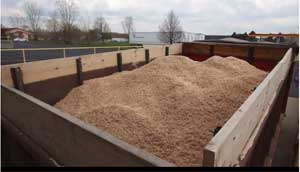
Producing what seems like a ton of sawdust every year, this woodworker has just been dumping it in the field behind the shop. He’s now looking for some ideas or uses for this most annoying by-product of woodworking.
Michael Dresdner: Sawdust works great in your compost pile. Layer it between layers of vegetable matter and it speeds up the composting process. If you make enough of it, you can sell it to one of the companies that makes MDF, but then you really do need to produce “tons” of it. We also add it to mulch when lining areas to block growth in our front yard. And, of course, it is always wise to keep a barrel full around for spills — water, solvents, etc.
Lee Grindinger: Sawdust can be considered toxic, but the toxic designation is reserved for waste not normally produced in a small woodworking shop. Once you start producing enough of it to be a problem you need to look into waste management options. A dumpster is an option or hauling the stuff to a landfill yourself. If the quantity of certain chemicals is sufficient, the sawdust produced by MDF, particle board, and other man-made sheet goods can be toxic and should never be burned. If all your sawdust is from solid wood, you can burn it in a stove made to handle pellets or coal chips. On a small scale sawdust from solids can be composted but the process requires a lot of added nitrogen. Walnut sawdust can cause urinary tract infections leading to death in animals and is not suited as animal bedding. You could check with local auto mechanics as a possible outlet for some sawdust but bagging the stuff gets to be more trouble than it’s worth just for the privilege of giving it away.





